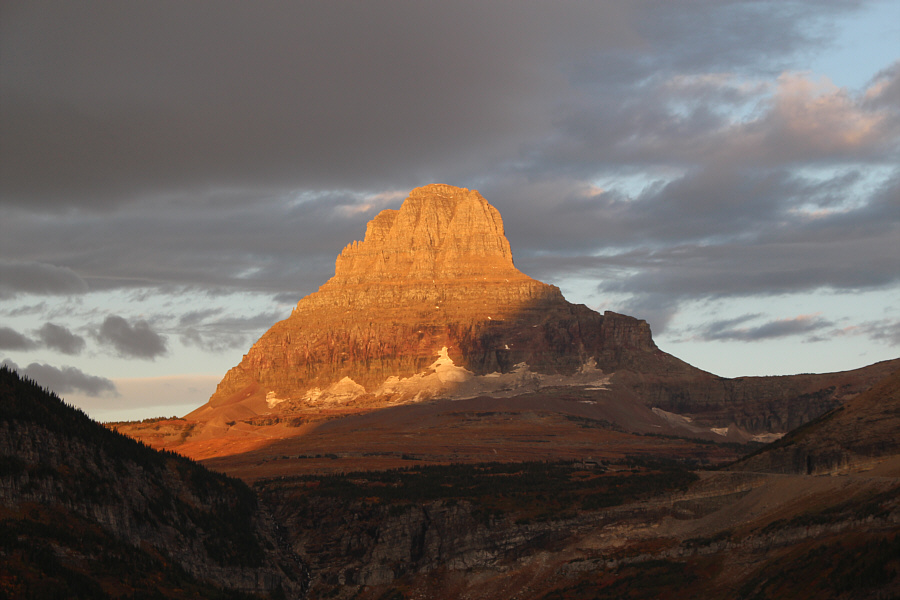 |
Early morning sunshine lights up Clements Mountain. |
 |
Reynolds Mountain is also illuminated nicely by the morning sun. |
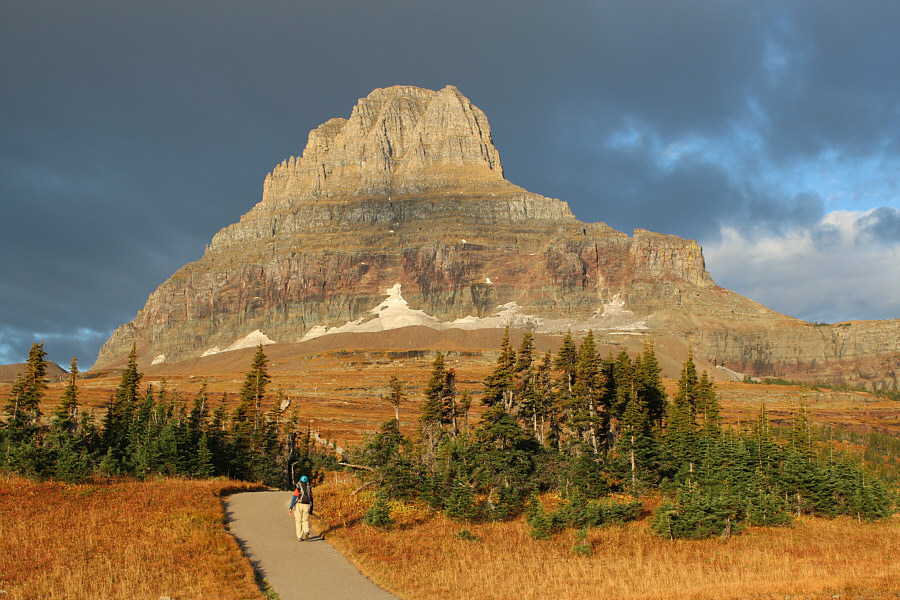 |
Doug starts up the paved path toward Clements Mountain. |
 |
Here is the standard tourists' view of Bearhat Mountain from Hidden Lake Overlook. |
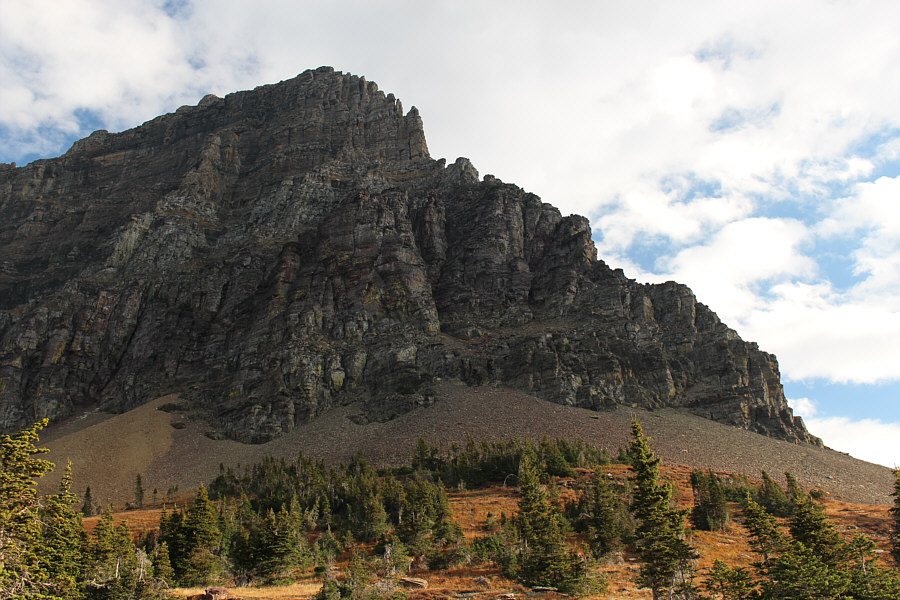 |
The south ridge of Clements Mountain is an intimidating sight from Hidden Lake Overlook. |
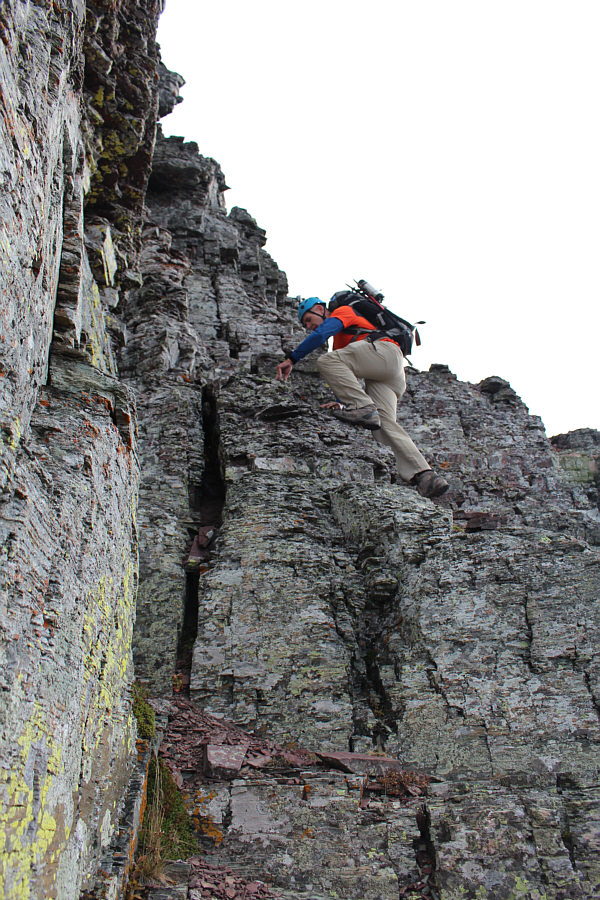 |
Doug tackles the ridge with fervor. |
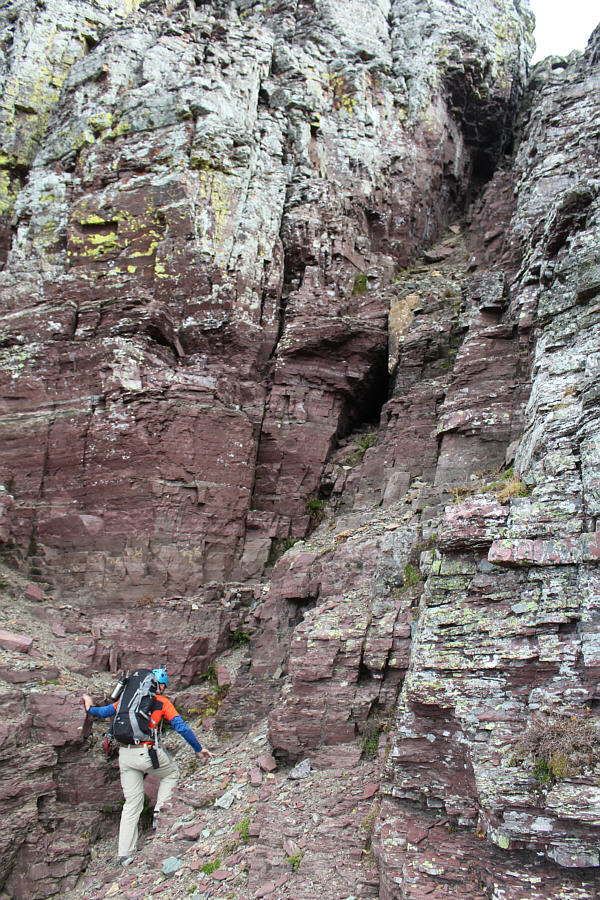 |
Doug starts up the gully ahead of him. |
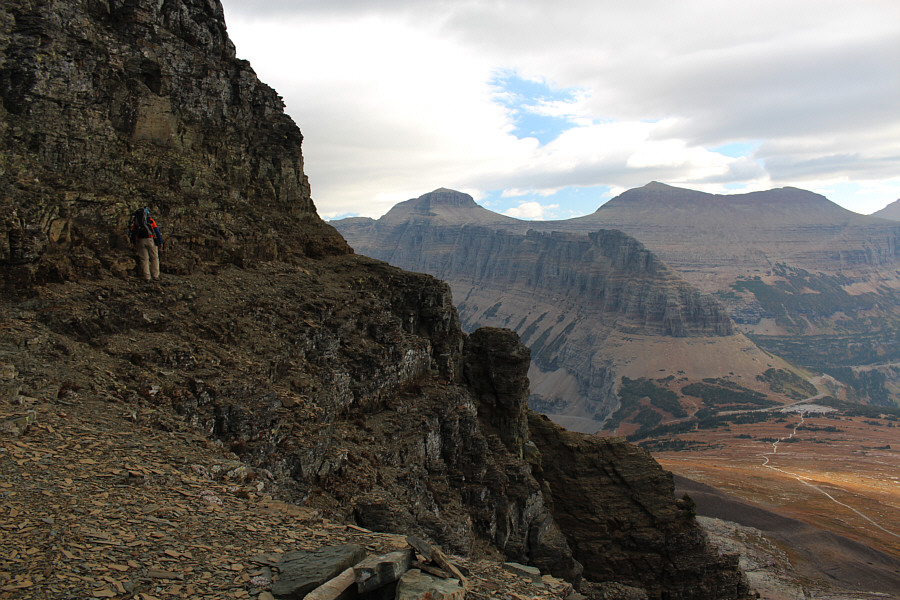 |
Doug begins the traverse across the east face of Clements Mountain. Pollock Mountain and Piegan Mountain are visible across Logan Pass. |
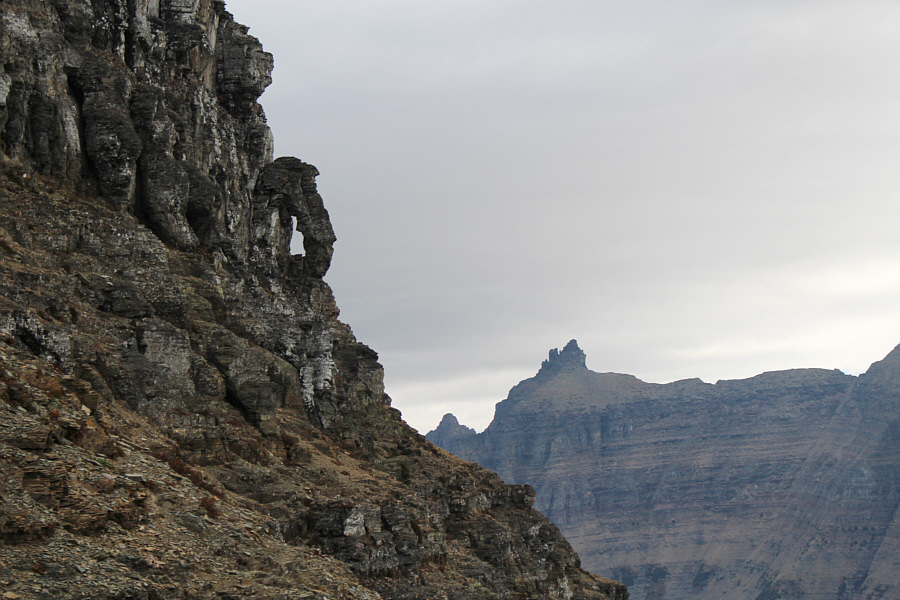 |
This "keyhole" is a distinctive landmark on the east face. Bishops Cap is visible in the distance. |
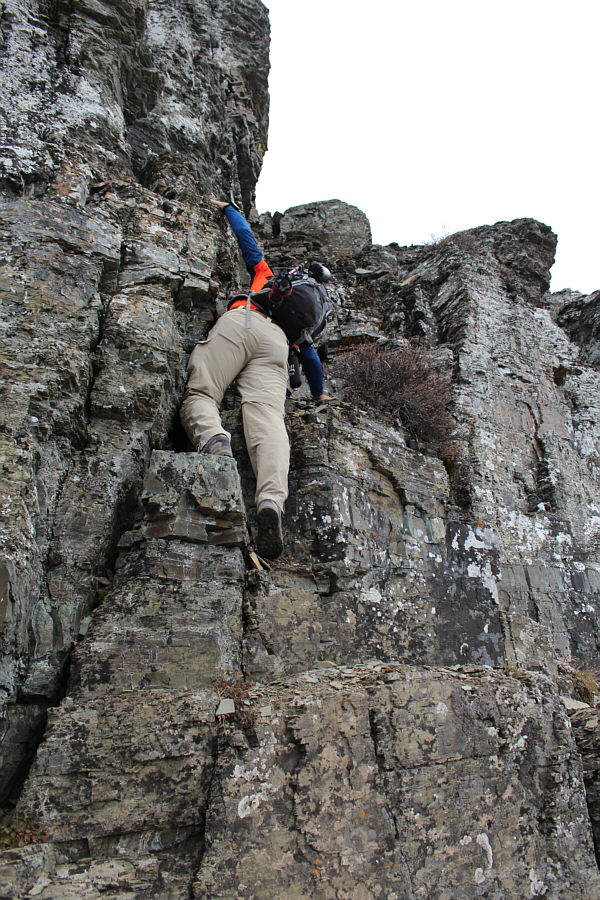 |
Doug climbs up typical Class 3 terrain on the east face. |
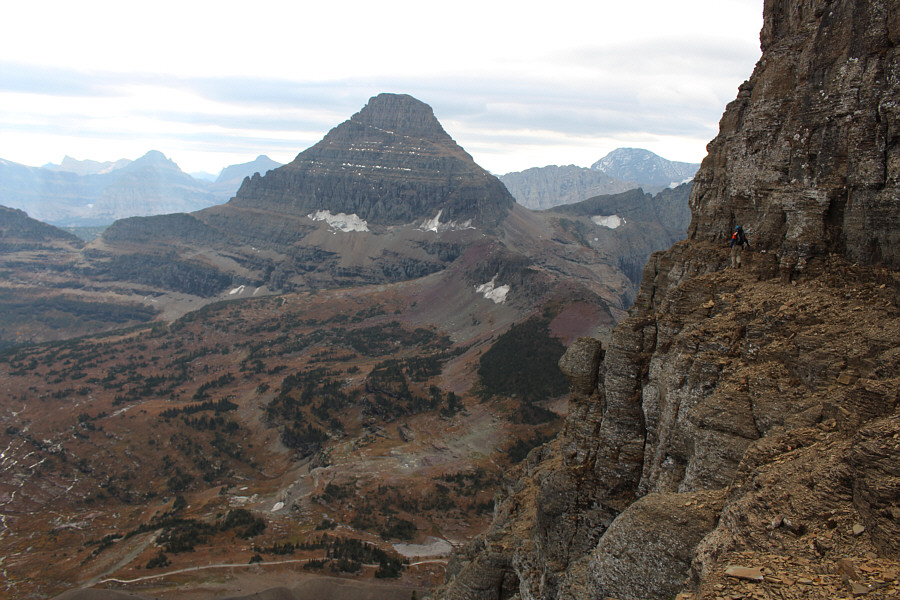 |
Doug traverses an exposed ledge high on the east face with Reynolds Mountain in the distance. |
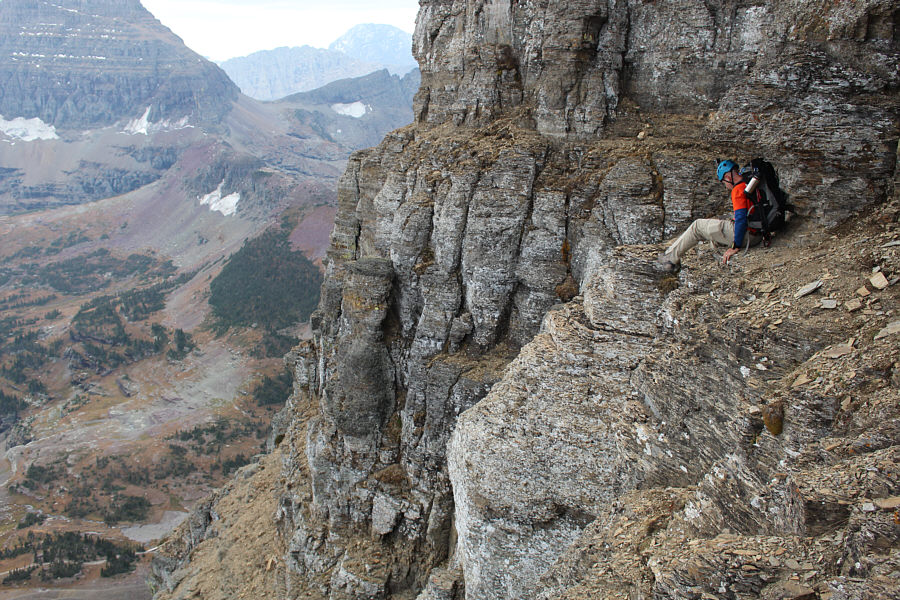 |
An overhanging rock forces Doug to scoot across a very exposed ledge on his butt. |
 |
Doug tries to find some solid handholds on Class 4 terrain near the start of the east face couloir. |
 |
Doug tackles some Class 3 rock in the east face couloir. |
 |
Sonny slowly follows Doug up the east
face couloir. Photo courtesy of Doug Lutz |
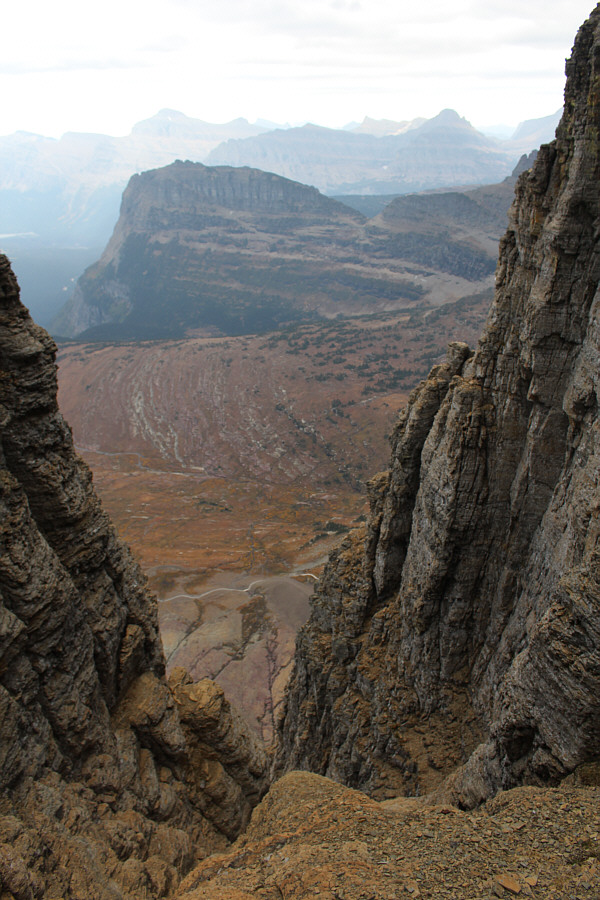 |
Here is another view looking down the east face couloir from higher up. Heavy Runner Mountain is framed by the walls of the couloir. |
 |
The east face couloir begins to curve to the right as Doug climbs higher. |
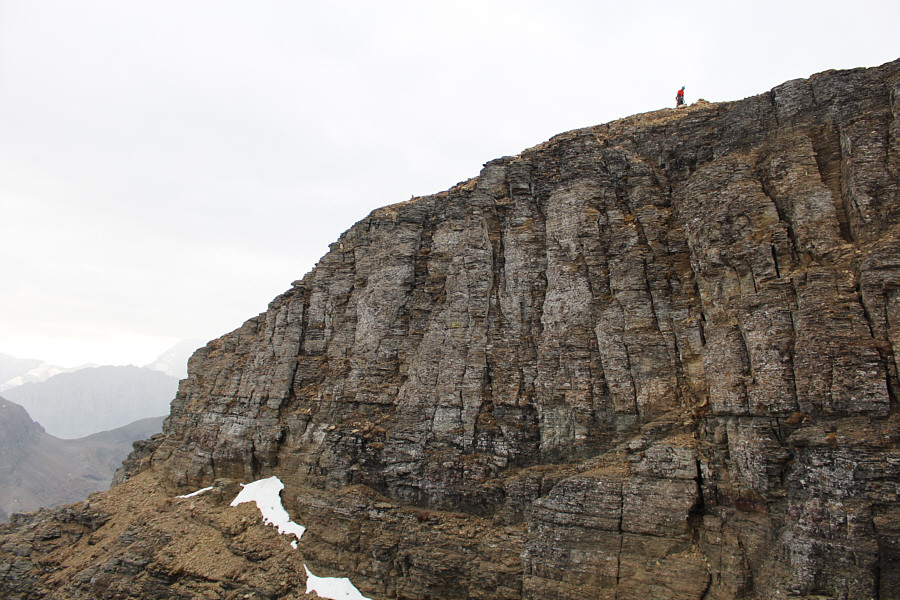 |
Doug reaches the summit of Clements Mountain. |
 |
Sonny takes the last few steps before
the summit. Directly behind him are Mount Oberlin and Mount
Gould. Photo courtesy of Doug Lutz |
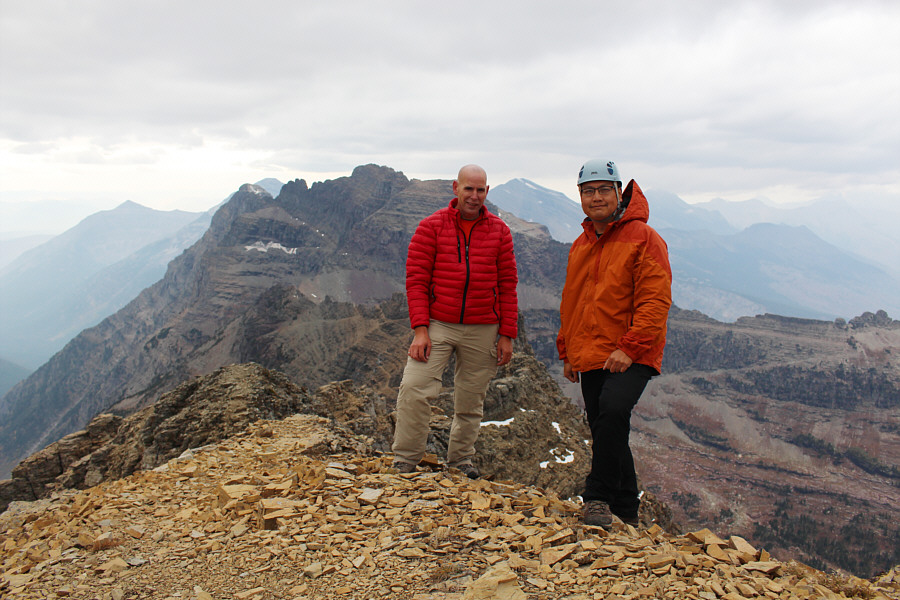 |
Doug and Sonny stand on the summit of Clements Mountain (2668 metres). |
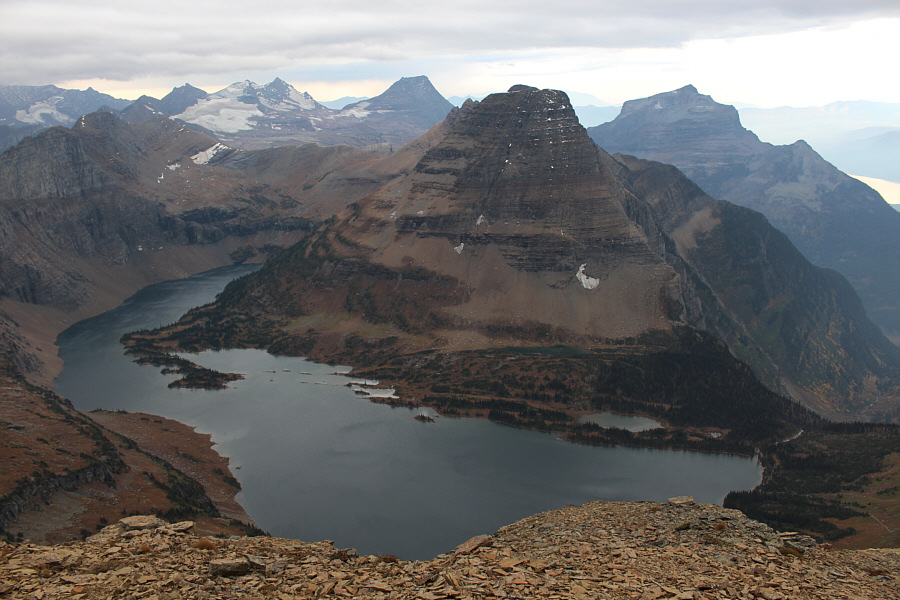 |
Bearhat Mountain and Hidden Lake attract the most attention to the southwest. |
 |
The connecting ridge to Mount Cannon looks complicated. Part of Hidden Lake trail is visible at lower left. |
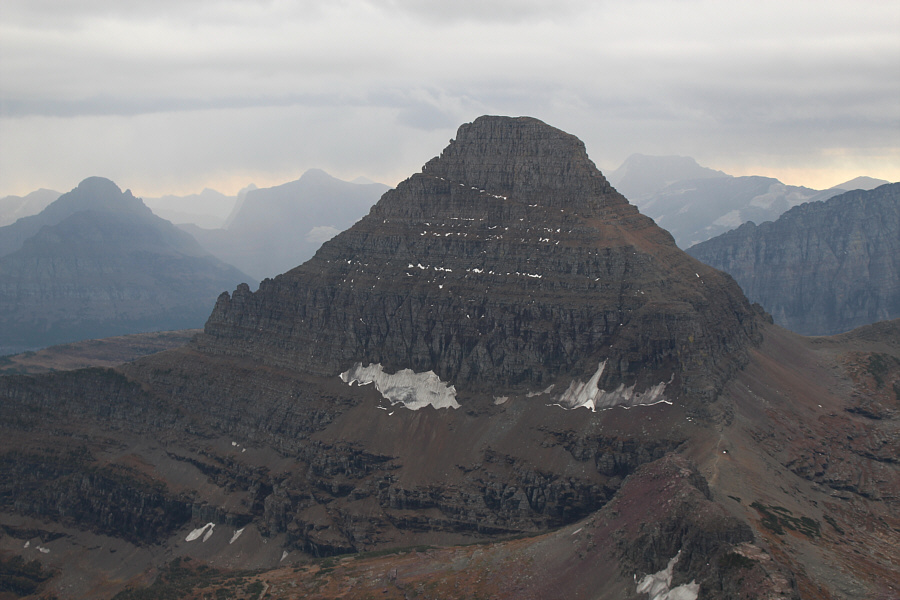 |
To the south is Reynolds Mountain. |
On our return trip, I managed to down-climb the crux while Doug, with a flair for the dramatic, actually jumped down! Our descent of Mount Cannon's southeast ridge was briefly interrupted when we encountered a couple of goats heading in the opposite direction. The goats eventually grew tired of a couple of men staring at them and moved on up the slope. Doug and I retraced our steps past the aforementioned low point before continuing along the beaten path I had taken from Clements Mountain. A good trail connects the beaten path with Hidden Lake trail further below, but somehow, I had missed seeing this junction both times I passed it! Luckily Doug knew where he was going, and I simply followed him down the slope. We eventually regained Hidden Lake trail and completed our loop by climbing back up to the Overlook. From there, I enjoyed a pleasant walk back to the parking lot. Doug, for some reason, actually jogged back ahead of me. Perhaps he wanted to avoid engaging in small talk with some of the other tourists on the trail! Regardless, Doug and I had plenty to chat about as we made the long drive back to Calgary that evening, and Doug still had to drive home to Red Deer after that.
Climbing both Clements Mountain and Mount Cannon turned out to be an extraordinary adventure, and I am thankful to have shared it with a dedicated mountain nut like Doug.
Be sure to check out Doug's
photos as well as his slick
video of this
trip.
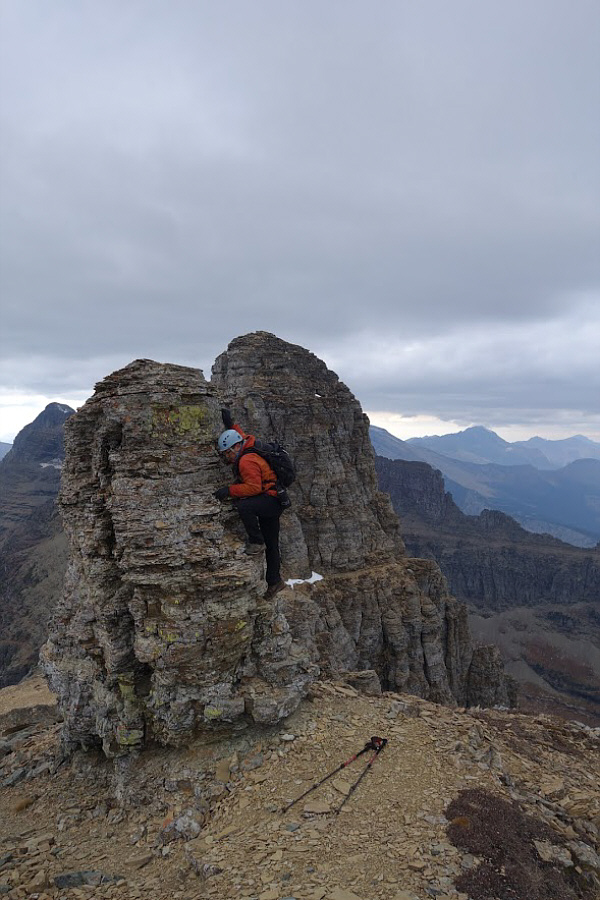 |
At Doug's request, Sonny climbs up a
small pinnacle along the west ridge of Clements Mountain. Photo courtesy of Doug Lutz |
 |
Doug (snow patch) walks along a goat track on the north side of this much larger pinnacle. |
 |
Doug pauses to wait for Sonny to join him on the ledge. |
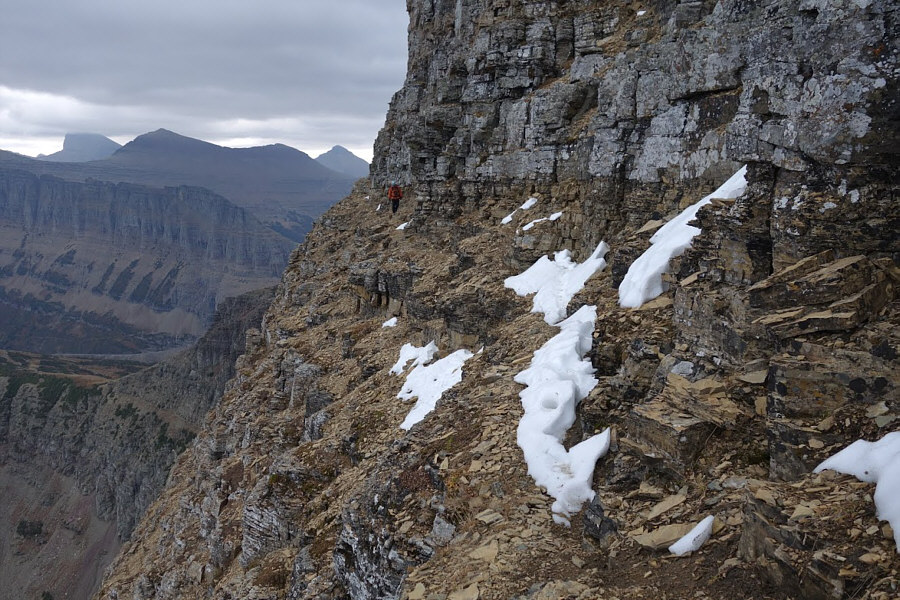 |
Sonny continues traversing the north
side of Clements Mountain's west ridge. Photo courtesy of Doug Lutz |
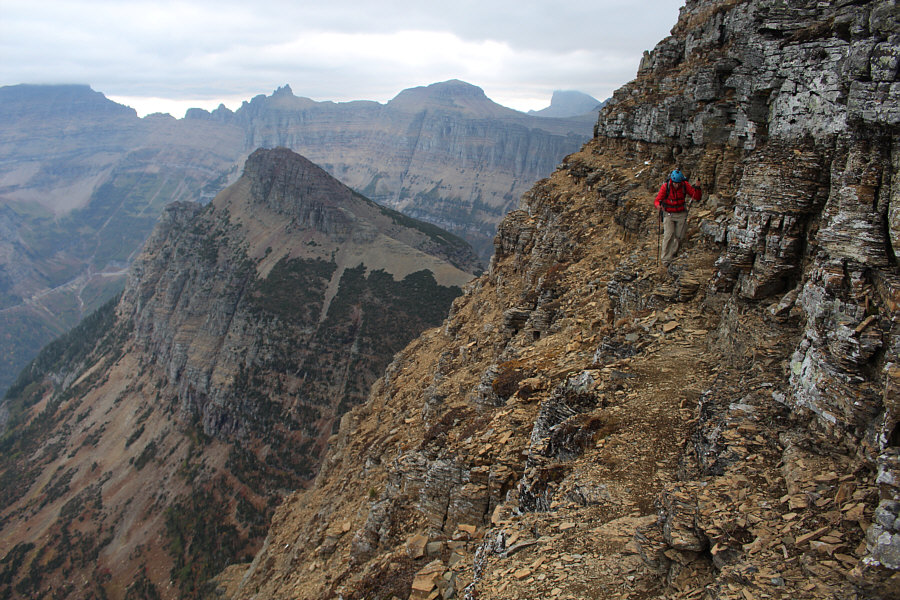 |
Mount Oberlin is visible at left as Doug finishes up the traverse on the north side. |
 |
Doug switches over to the south side of the west ridge. To the right is Clements Mountain. |
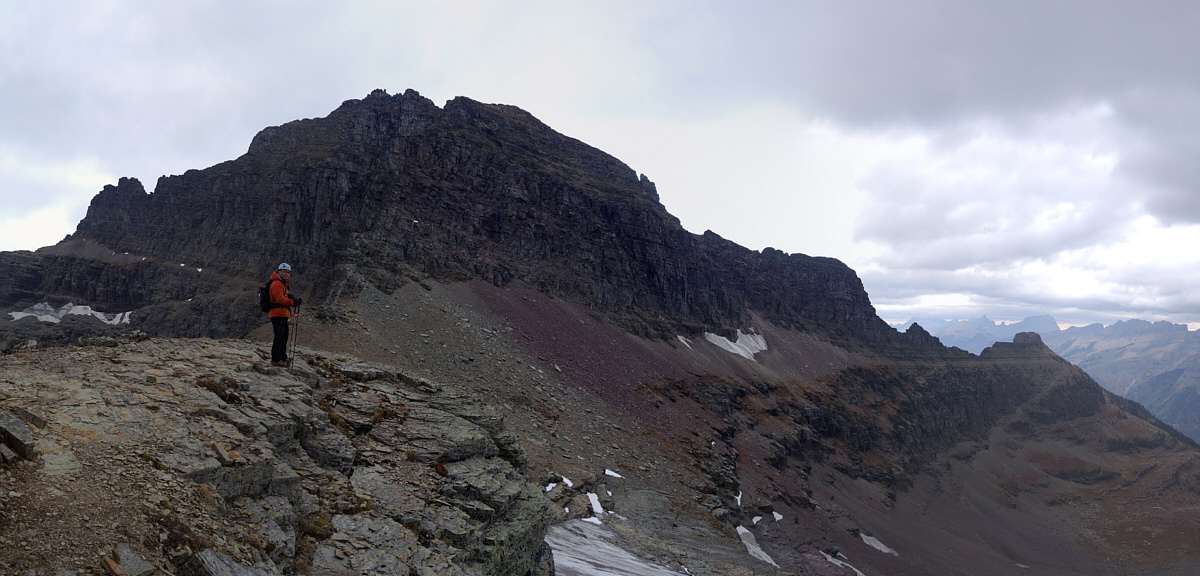
Mount Cannon appears impregnable from the low point of the connecting ridge.
Photo courtesy of Doug Lutz
 |
Doug follows a beaten path up Mount Cannon. |
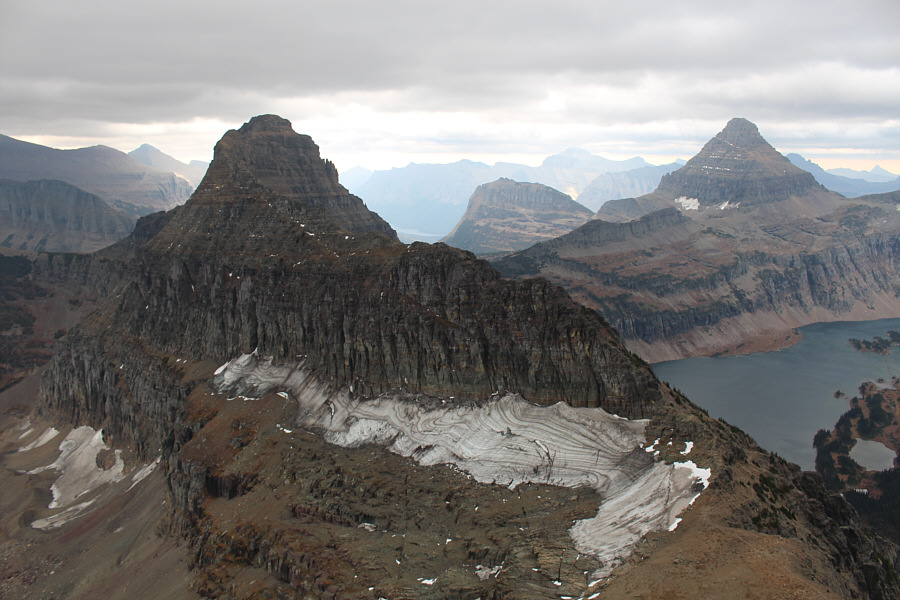 |
Here is a more comprehensive view of Clements Mountain and its west ridge. |
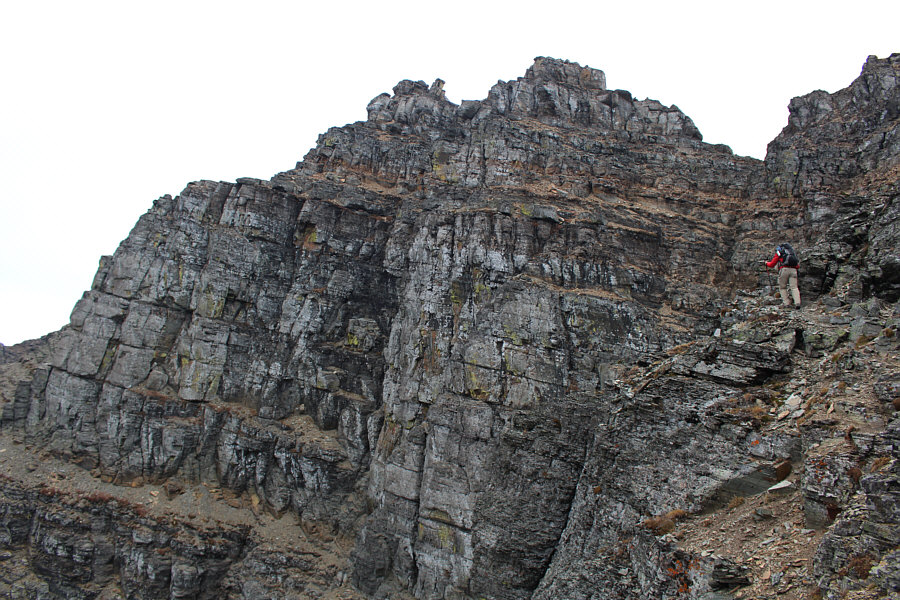 |
Doug approaches the summit ridge of Mount Cannon. |
 |
Doug checks out the gap that separates him from the summit ridge. |
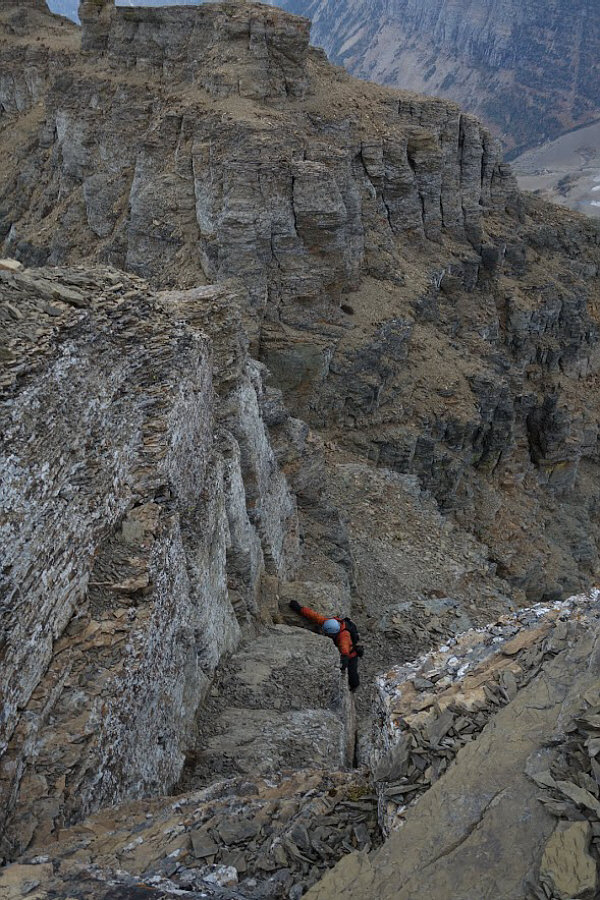 |
After crossing the gap, Sonny climbs
up the crux to gain Mount Cannon's summit ridge. Photo courtesy of Doug Lutz |
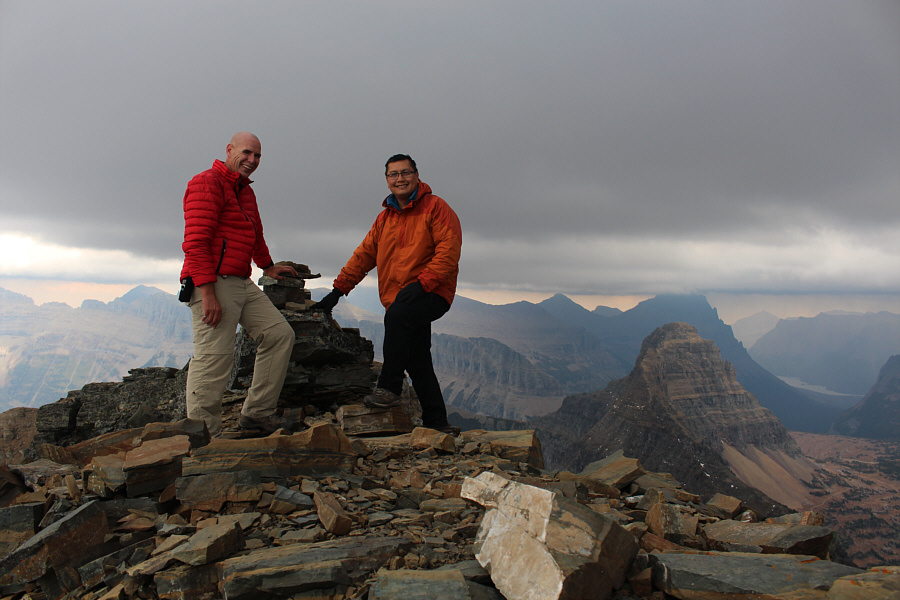 |
Doug and Sonny are elated to tag the summit of Mount Cannon (2721 metres). Clements Mountain is visible in the distance. |
 |
Sunbeams appear to shine on the marginally lower southwest peak of Mount Cannon. |
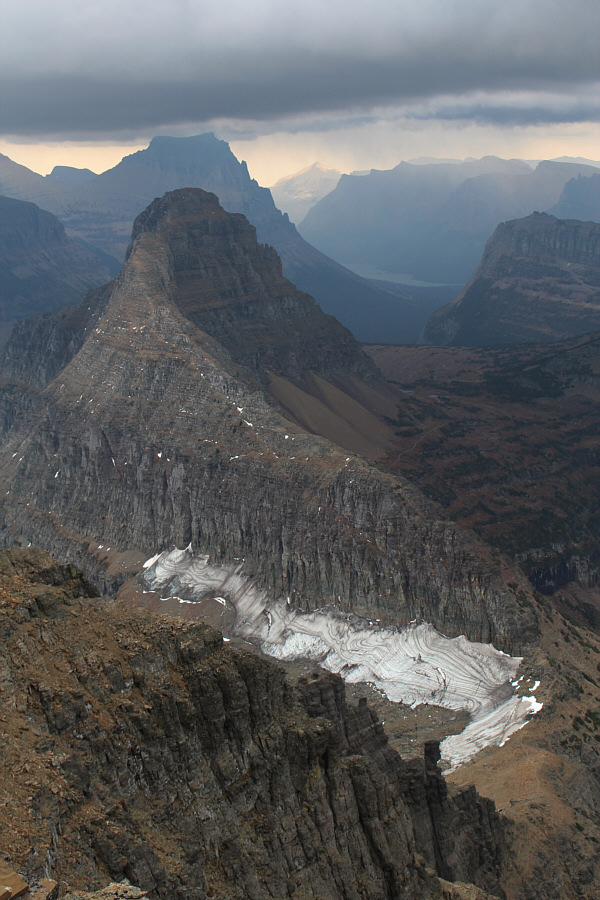 |
Behind Clements Mountain is Going-to-the-Sun Mountain. Bathed in sunshine on the distant horizon at centre is Divide Mountain. |
 |
To the south, Hidden Lake is surrounded by Reynolds Mountain, Dragon's Tail, and Bearhat Mountain. |
 |
The sun comes out as Doug works his way back along Mount Cannon's summit ridge. |
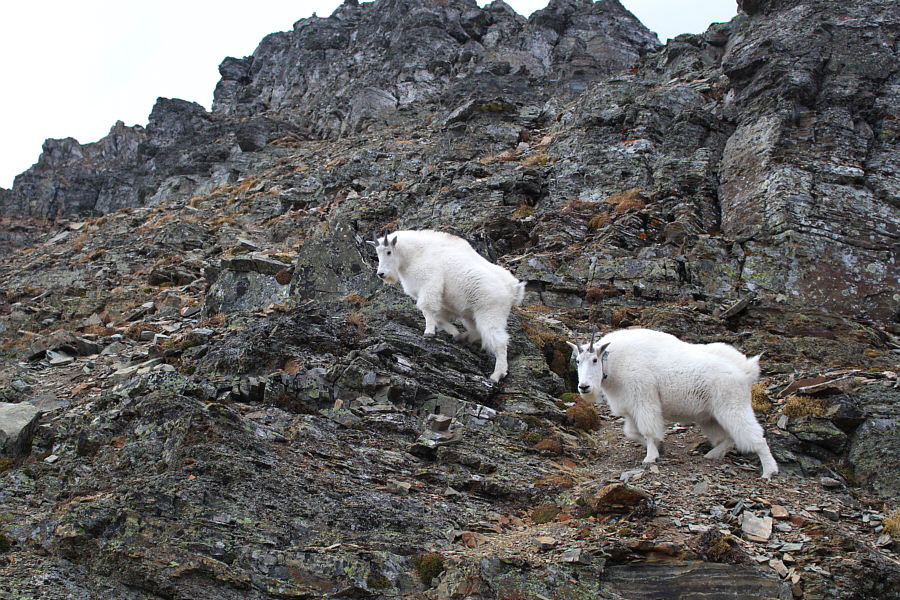 |
A couple of goats keep their eyes on Doug and Sonny. |
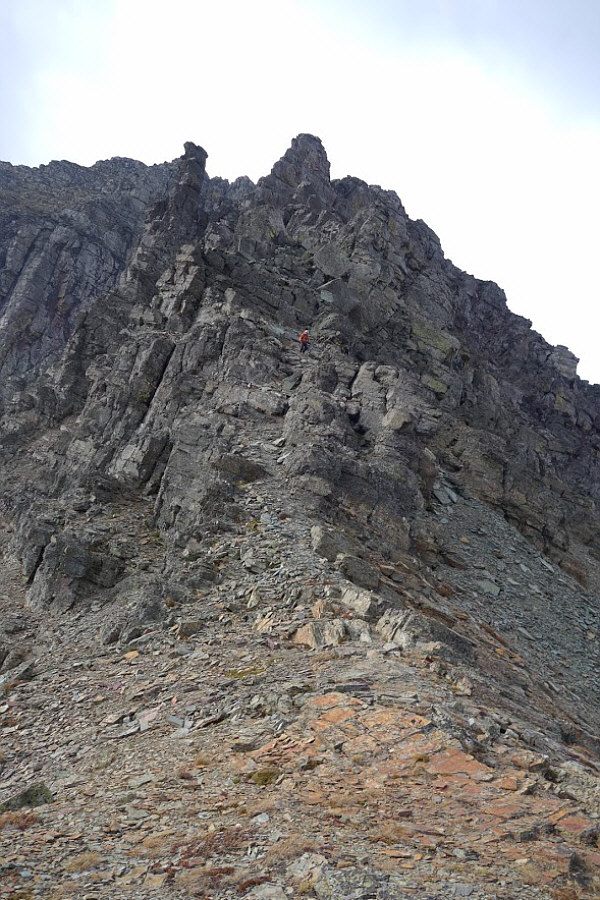 |
Sonny carefully descends the southeast
ridge of Mount Cannon. Photo courtesy of Doug Lutz |
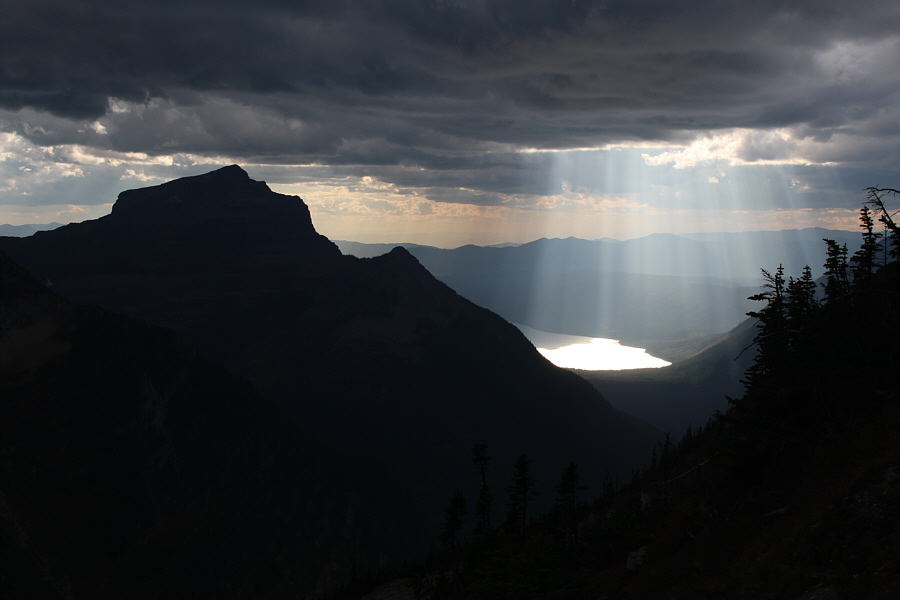 |
Sunbeams light up the north end of Lake McDonald. At left is Mount Brown. |
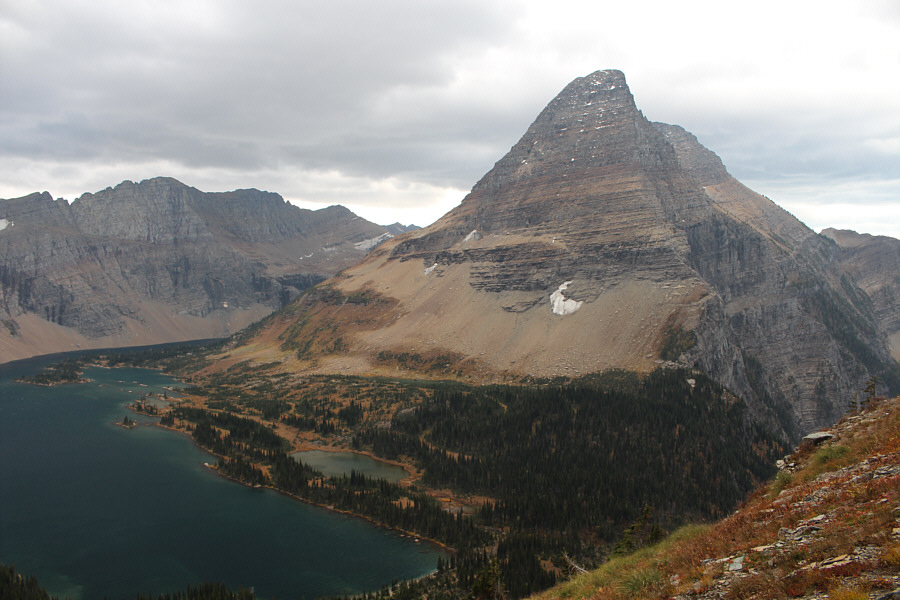 |
Here is one last look at Bearhat Mountain. |
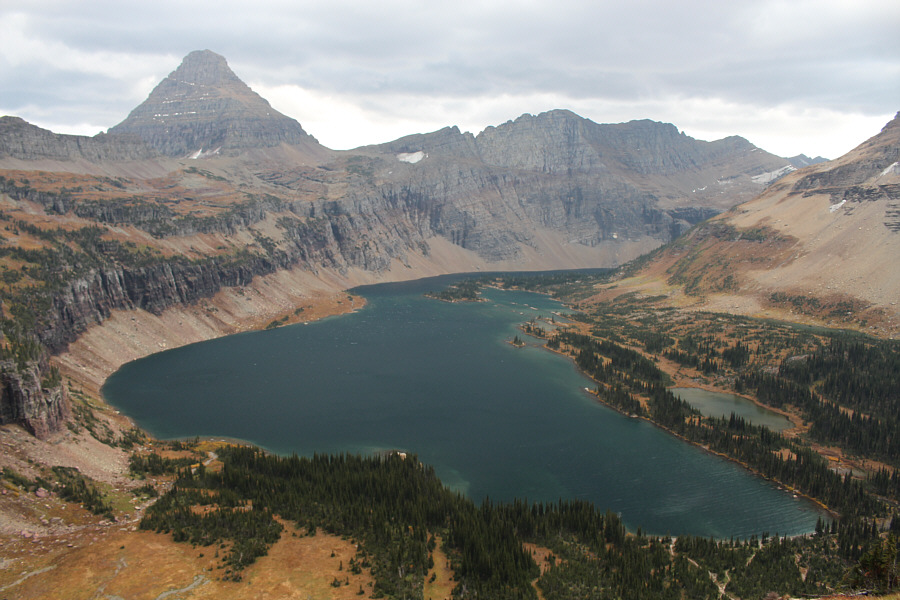 |
Reynolds Mountain and Hidden Lake deserve one final look as well. |
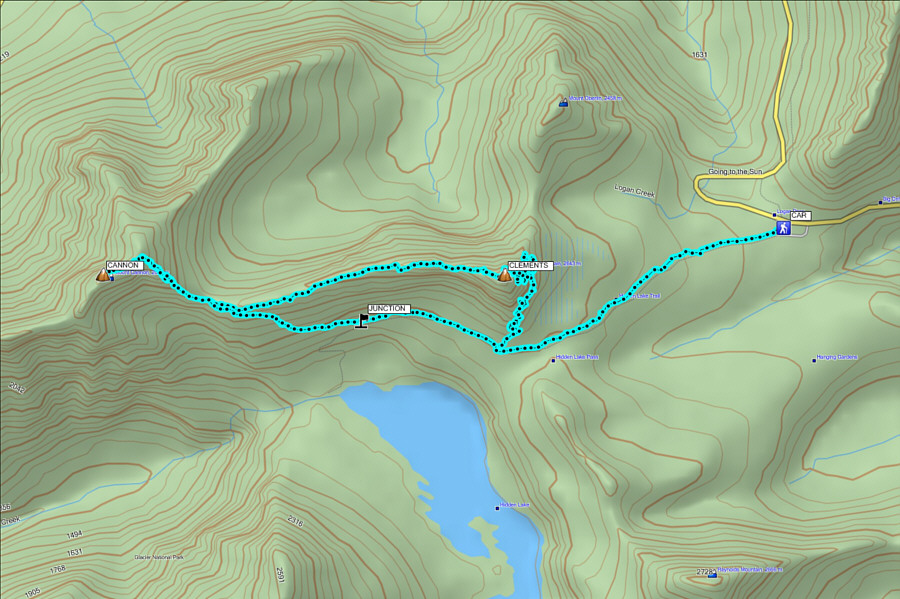 |
Total
Distance: 15.2 kilometres Round-Trip Time: 9 hours 45 minutes Total Elevation Gain: ~985 metres |